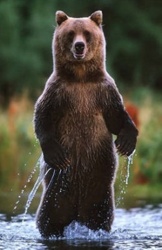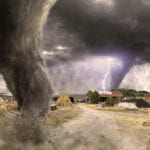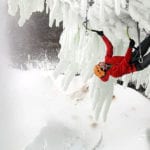<span class=”litem”
- Never Run Do not run. Bears can run faster than 30 miles (50K) per hour – faster than Olympic sprinters. Running can elicit a chase response from the otherwise non-aggressive bear.
<span class=”litem”2. An Unaware Bear If the bear is unaware of you, detour quickly and quietly away from it. Give the bear plenty of room, allowing it to continue to undisturbed. <span class=”litem” 3. An Aware Bear If the bear is aware of you but has not acted aggressively, back away slowly, taking in a calm, firm voice while slowly waving your arms. Bears that stand up on their hind legs are usually just trying to identify you, and are not threatening.
<span class=”litem”4. An Approaching Bear Do not run; do not drop your pack. A pack can help protect your body in case of an attack. To drop a pack may encourage the bear to approach people for food. Bears occasionally make ‘bluff charges’, sometimes coming to within ten feet of a person and before stopping or veering off. Stand still until the bear stops and has moved away, then slowly back off. Climbing trees will not protect you from black bears, and may not provide protection from grizzlies. <span class=”litem”5. If a Bear Touches You If a grizzly bear does actually make contact with you, curl up in a ball, protecting your stomach and neck, and play dead. If the attack is prolonged, however, change tactics and fight back vigorously. If it is a black bear, do not play dead; fight back immediately. Source: Denali National Park and Preserve, Alaska Technorati Tags: animals, bears
Read More: Twitter Facebook YouTube Instagram















